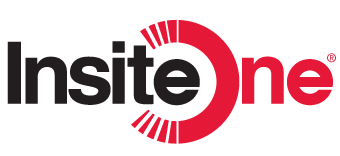8 Benefits to Implement an Enterprise Imaging Solution

Introduction
Artificial Intelligence (AI) is just one of the 8 benefits to implement an enterprise imaging solution in your organization today. Yet without a solid foundation to manage your algorithms, you may find clinicians will not use the algorithms if they do not integrate into their daily workflow.
Most healthcare organizations lag in modernizing their technology. This opens risks to cyberattacks, limited interoperability, and increases overall costs. An even worse outcome is negatively affecting patient care. Talk to most CIOs and cybersecurity along with digitization strategies are priorities and will continue for the foreseeable future.
Enterprise Imaging (EI) solutions are one of the best investments hospitals can implement to digitize their organization. Yet for maximum value, all digital imaging needs to be integrated across the enterprise. This requires eliminating siloed solutions, establishing new workflows, and providing extensive user training. With all imaging departments using your enterprise solution, data availability increases, as does improved cross team collaboration.
In this month’s blog, we narrow the list down to the top 8 benefits to implement an enterprise imaging solution, plus share a few tips to help you get started!
Benefit #1: Improved Efficiency
Imagine you are a physician who needs access to a patient’s clinical record and want to see images from radiology, cardiology, and pathology. How would you accomplish this today? If there is no single source, you would be forced to hunt down that data. This can impact the picture you need to develop an optimal care pathway for your patient. Hunting for images, collaborating with colleagues, and wasting time looking for data decreases the effectiveness of care providers.
InsiteOne Tip: Enterprise Imaging increases efficiency significantly. Once all clinical images are integrated within the patient’s medical record, physicians can see everything in context. That means no more hunting for images or data when your EHR and enterprise imaging platform are integrated. Collaboration improves since your clinical care team can now be on the same page. Choosing the right enterprise viewer is also necessary. Make sure it supports all image and video formats you need, as well as provides the key tools for physician productivity. The viewer should be diagnostic, feature rich, and expand beyond DICOM images (such as digital pathology, ophthalmology, etc.). Finally, integrate your enterprise viewer into your EHR to provide a unified, automated mechanism for your care team to view the complete patient and clinical record in context from within your EHR.
Benefit #2: Cost Reduction
Organizations that have siloed solutions for radiology, cardiology, ophthalmology, dental imaging, wound care, digital pathology, surgical video, and endoscopy, are operating under increased costs. With separate interfaces, storage, integrations, and software support to manage, you need an army to support them.
InsiteOne Tip: Enterprise Imaging can reduce your overall operating costs. As a single source for interfaces, storage management, and vendor support, you benefit from a streamlined infrastructure that saves money in the long-term. For maximum benefit, be sure to select a vendor that has workflow tools to support the various “ologies” you will migrate to your enterprise imaging platform. This ensures that necessary processes can still be included at the departmental level. Also, look for vendors that provide cloud storage as part of their infrastructure. This can provide built in options for disaster recovery, allowing your care team to continue accessing critical patient data should your internal systems become off-line. Finally, a single EI solution may be far more cost effective in terms of personnel required to support them, often requiring fewer resources than those required by many departmental solutions.
Benefit #3: Scalability
Adding storage to departmental solutions can be costly. When storage technology changes, older systems may require costly upgrades or face end-of-life scenarios if they can’t scale to use new technology.
InsiteOne Tip: Managing multiple storage technologies is another key benefit to enterprise imaging solutions. This provides your organization with the best approach on managing various storage tiers (fast, slow, cloud, etc.). Adding new storage segments is quite easy and for those that support cloud storage, scaling can be instantaneous and unlimited. Some solutions even provide capabilities to copy data from one storage location to another, making the need for migrating that data a thing of the past when new storage technology becomes available.
Benefit #4: Interoperability
Without strong interoperability standards, integrating to other downstream IT solutions becomes challenging, making your investment a dead-end. Fortunately, most modern IT systems provide better integration and interoperability capabilities than solutions of the past, and that is a must for every organization.
InsiteOne Tip: Data interoperability is critical when investing in a new IT solution for your organization. With most systems having an open architecture, as new integration profiles or industry standards become available, adopting new standards tends to be easier. DICOM, FHIR, HL7, and API integrations are all standards your EI platform must support. This provides you with the greatest flexibility when integrating images and other clinical data into your downstream systems.
Data standardization is another very important factor to consider as part of your EI solution. Standardized data provides far more value for analysis and improves interoperability with other systems than non-standardized data. Investing the time upfront to ensure your data conforms to industry standards, not proprietary formats, will make system integrations, data analysis, and population health initiatives easier and more reliable in the future.
Benefit #5: Security and Compliance
Cybercrime is on the rise in healthcare and organizations that have ignored system modernization are at an increased risk for cyberattacks. Educating employees about how to thwart common cyber-threats (like phishing attempts), is just as critical as system modernization. System modernization can help decrease the likelihood of success when perpetrators do gain entry, and this can help prevent major damage to your organization.
InsiteOne Tip: There are many stories of cyberattacks in healthcare systems where the vulnerability came from outdated technology that was still in use. One of the many benefits an EI solution provides is incorporating modern security features that comply with industry specific regulations, such as HIPAA. Solutions that provide cloud storage infrastructure may even have higher security capabilities than on-premises solutions since cloud providers are continually updating security features to stay ahead of cybercriminals.
Benefit #6: Enhanced Patient Experience
A bad patient experience can cause patient leakage (they will not return). Even worse, they will not recommend your organization to their family and friends. In a competitive healthcare landscape, improving the patient’s experience can keep them coming back.
InsiteOne Tip: Information exchange continues to be disjointed and is a major challenge as patients move from one provider to another. Every visit requires the patient to provide information they already provided. This creates significant duplication and can become a source of irritation and stress.
Centralized access to all patient medical and clinical information (including all images) can often speed up diagnosis. This in turn improves the care the patient is receiving. Improved collaboration capabilities between providers speeds recovery for many patients, leading to a better overall patient experience. Enterprise imaging provides a key benefit by managing and maintaining the complete clinical record, then integrates those images in context to the patient’s medical record. This can lead to a faster diagnosis time and better collaboration between medical colleagues.
Benefit #7: Data Analytics
Decentralized data makes analyzing the data difficult, time consuming, and oftentimes incomplete. Also, not having all the data available leads to inaccurate analysis and insights.
InsiteOne Tip: Centralized data storage, strong data governance, and imaging standards collectively play a part in ensuring better consistency, accuracy, and easier analysis of your data. Your EI solution becomes the foundation for future data analysis, making data analytics easier and more accurate. Standardized and centralized data improves population health initiatives as well. This can even open the doors to data monetization, often providing new revenue streams.
Benefit #8: Simplified Management for Artificial Intelligence (AI)
There are over 500 AI algorithms approved for use by the FDA. Implementing and managing all those point solutions can be next to impossible for even the most skilled organizations. Yet even a few AI point solutions can be challenging to maintain when implemented and managed outside of traditional imaging workflow.
InsiteOne Tip: Once again, data centralization is a key benefit an EI solution provides. Centralizing all your imaging data allows you to better manage your AI initiatives within the context of your clinical workflows. In fact, some EI solutions provide a plug-in framework to make this process easier to manage. Providing a standardized, centralized platform improves your implementation and adoption of AI within your organization. IT can also provide easy access to historical data for continuous AI algorithm training. Integrating AI into the clinical workflows established by your EI team may also provide better ROIs from those AI algorithms. In some instances, you may be able to use certain AI algorithms in other specialties and having a EI solution can make this possible and easier to roll out.
Conclusion
We have only touched the surface with our 8 benefits to implement an enterprise imaging solution in this month’s blog. Understanding your current and future needs, along with careful vendor selection will ensure your enterprise imaging platform suits you for many years to come. The most important step to take in modernizing your enterprise is beginning your journey to enterprise imaging, and vendors like InsiteOne can help provide you with the platform you need to improve your patient’s experience and ultimately better outcomes.




